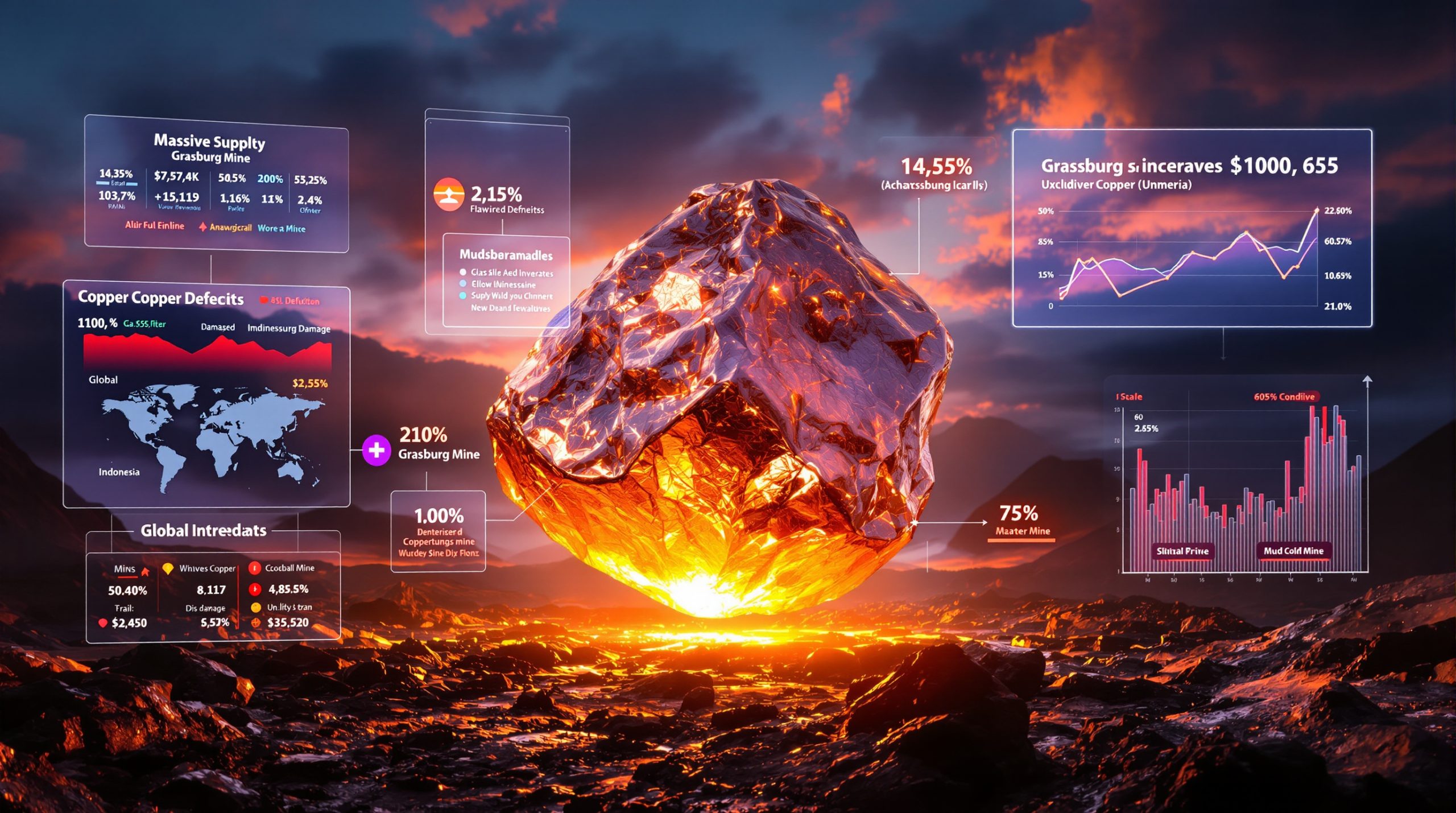What's Driving the Current Gold Price Rally?
Monetary Policy and Interest Rate Dynamics
- Federal Reserve's shifting stance on interest rates creating a favorable environment for gold
- Market anticipating potential rate cuts, with some Fed officials projecting up to three cuts this year
- Lower interest rates reducing opportunity costs of holding non-yielding assets like gold
- Divergent opinions among central bankers creating market uncertainty that benefits safe-haven assets
Roger Ferguson, former Federal Reserve Vice Chairman, recently noted that "Fed's Bowman is way ahead of her colleagues in expecting three cuts this year," highlighting the divergent views within the central bank that are contributing to market uncertainty.
This policy divergence has significant implications for gold, as interest rate expectations remain a primary driver of precious metals pricing. When rates decline, non-yielding assets like gold become relatively more attractive to investors seeking portfolio protection.
Global Economic Uncertainty Factors
- Slowing economic growth in major economies pushing investors toward protective assets
- Labor market showing signs of cooling with what analysts describe as a "no hire, slow fire" environment
- Manufacturing and service sector indicators suggesting potential economic headwinds
- Persistent inflation concerns despite moderating headline numbers in some regions
Renaissance Macro's Neil Dutta characterized the current employment situation as a "no hire, slow fire labor market," suggesting a cautious approach from employers that typically precedes broader economic slowdowns. This type of labor market condition historically correlates with increased investment flows into defensive assets like gold as inflation hedge.
The combination of slowing growth indicators alongside still-elevated inflation creates a challenging economic backdrop that typically favors precious metals as portfolio stabilizers.
Geopolitical Tensions and Trade Policies
- International conflicts increasing safe-haven demand for precious metals
- Upcoming high-profile diplomatic meetings creating market anticipation
- Potential new tariff implementations affecting global trade dynamics
- Political transitions in major economies influencing market sentiment
Recent discussions about new U.S. tariffs have sparked concerns about their impact on global trade and economic growth. During a recent CNBC interview, Barrick Mining CEO Mark Bristow addressed what these tariff implications might mean for the gold industry, suggesting that trade tensions typically contribute to gold's appeal as a safe-haven asset.
When trade policies become more restrictive, the resulting economic uncertainty often drives investors toward traditional stores of value like gold, which has maintained its worth through countless economic and political cycles.
Why Do Mining Executives Remain Bullish on Gold?
Production Economics and Market Fundamentals
- Mining production costs establishing effective price floors for the commodity
- Industry leaders reporting strong operational results despite challenging conditions
- Major producers maintaining stable production outlooks despite inflationary pressures
- Supply constraints from maturing operations affecting long-term availability
Barrick Mining CEO Mark Bristow recently expressed confidence in gold's outlook during a CNBC "Squawk on the Street" interview, stating clearly that "there's still more upside risk on gold prices." This perspective from one of the industry's most prominent executives reflects the strong underlying fundamentals supporting the gold market.
Mining executives have unique visibility into production costs and supply constraints, making their market assessments particularly valuable. As production costs rise due to inflation, lower ore grades, and increased regulatory requirements, the price floor for profitable gold production continues to move higher.
Strategic Market Positioning
- Gold mining companies implementing forward-looking operational strategies
- Industry consolidation creating stronger, more resilient producers
- Exploration investments focusing on high-grade, long-life assets
- Balance sheet strengthening across the sector providing financial flexibility
Major producers have been discussing their full-year production outlooks on gold with generally stable projections despite various operational challenges. This production discipline helps maintain a healthy supply-demand balance in the market, preventing oversupply that could pressure prices.
The industry has learned valuable lessons from previous boom-bust cycles, with current management teams demonstrating greater focus on sustainable operations rather than pursuing growth at any cost. This strategic shift supports more stable long-term gold pricing.
Long-term Investment Thesis
- Mining executives viewing current prices as sustainable with further upside potential
- Production discipline maintaining healthy supply-demand balance
- Strategic reserve replacement becoming increasingly challenging
- Environmental and social governance factors affecting project development timelines
The increasingly complex regulatory environment for new mine development means that bringing new supply online takes significantly longer than in previous decades. Environmental permitting, community consultations, and infrastructure requirements have all become more demanding, restricting the industry's ability to quickly respond to higher prices with increased production.
This structural constraint on supply growth provides support for gold prices even as demand continues to strengthen from various sectors, including central bank purchases, investment demand, and traditional jewelry consumption.
How Are Technical Indicators Supporting Higher Gold Prices?
Price Pattern Analysis
- Gold breaking through key resistance levels in recent trading sessions
- Price consolidation patterns suggesting potential for further upward movement
- Support levels established at recent breakout points providing downside protection
- Trading volumes confirming strength of recent price advances
Gold's recent price action has shown an impressive ability to establish and maintain new support levels following breakouts. Each consolidation phase has been followed by renewed strength, suggesting continued buying interest at progressively higher prices.
Technical analysts note that gold's price pattern has been following a series of higher lows and higher highs—the classical definition of an uptrend. This pattern typically continues until a significant change in fundamental market dynamics occurs.
Momentum and Sentiment Indicators
- Technical oscillators not yet showing overbought conditions despite price strength
- Market sentiment measures indicating room for additional investor participation
- Speculative positioning in futures markets below historical extremes
- Options market showing increased interest in upside protection strategies
Despite reaching multi-year highs, gold has not yet triggered extreme readings on most technical oscillators, suggesting the rally has not reached exhaustion. This contrasts with previous gold bull markets where price advances frequently pushed momentum indicators into overbought territory for extended periods.
The relatively measured sentiment toward gold among broad market participants indicates there remains significant potential for new investors to enter the market as the price advance continues and attracts additional attention.
Historical Price Comparisons
- Current rally showing similarities to previous bull market phases
- Inflation-adjusted price levels suggesting potential for continued appreciation
- Seasonal patterns historically favorable in coming months
- Correlation patterns with other asset classes supporting diversification benefits
When adjusted for inflation, gold still has significant room to reach its previous all-time high gold analysis in real terms. This historical comparison provides context for why many industry observers believe the current price levels are not excessive despite nominal record highs.
Seasonal patterns typically show strength for gold in the latter part of the year, potentially providing additional tailwinds to the current uptrend as seasonal factors align with the fundamental drivers already in place.
What Role Are Central Banks Playing in the Gold Market?
Reserve Diversification Strategies
- Central banks continuing significant gold purchases to diversify foreign reserves
- Reduced reliance on traditional reserve currencies driving institutional demand
- Emerging market central banks particularly active in accumulating gold reserves
- Reserve managers citing portfolio stability and geopolitical hedging as key motivations
Central bank gold purchases have been a cornerstone of gold demand in recent years, with multiple nations actively diversifying their foreign reserves away from traditional currencies. This institutional buying provides significant support for gold prices and reflects broader concerns about currency stability and geopolitical risks.
The accelerating trend of reserve diversification represents a fundamental shift in central bank thinking about portfolio allocation, with gold regaining prominence as a core reserve asset after decades of being marginalized in official portfolios.
Impact on Supply-Demand Balance
- Central bank buying absorbing significant portion of annual mine production
- Institutional demand creating price support during market corrections
- Long-term nature of central bank holdings reducing available market supply
- Transparent reporting of purchases influencing market sentiment
Central bank acquisitions have fundamentally altered the supply-demand dynamics in the gold market by removing substantial physical metal from circulation. Unlike private investors who might sell during price rallies, central banks typically maintain their holdings through market fluctuations, effectively reducing the "free float" of gold available for trading.
This reduction in tradable supply magnifies the price impact of new buying interest, as a smaller pool of available metal must satisfy growing demand from various market segments.
Future Purchase Projections
- Reserve managers indicating continued interest in gold acquisitions
- Geopolitical tensions likely to accelerate reserve diversification trends
- De-dollarization efforts in some economies supporting gold demand
- Historical allocation patterns suggesting room for increased gold percentages in reserves
Despite significant purchases in recent years, many central banks still maintain gold allocations well below historical norms as a percentage of their total reserves. This suggests considerable potential for continued buying as the reserve diversification trend continues.
The growing interest in reducing reliance on any single currency for reserves has created structural demand for gold that appears likely to persist regardless of short-term price fluctuations.
How Might Economic Data Influence Gold's Price Trajectory?
Inflation Metrics and Expectations
- Core inflation measures remaining above central bank targets in many economies
- Wage growth data influencing medium-term inflation expectations
- Consumer price expectations affecting investment decisions
- Commodity price trends providing leading indicators for inflation pressures
While headline inflation has moderated in some regions, core inflation measures remain stubbornly above central bank targets in many major economies. This persistent inflationary environment typically supports gold prices as investors seek protection against the erosion of purchasing power.
Inflation expectations, rather than current inflation readings, often drive investment decisions. Current survey data suggests consumers and businesses continue to expect elevated inflation over the medium term, creating ongoing demand for inflation hedges like gold.
Employment and Growth Indicators
- Labor market cooling potentially accelerating monetary easing
- GDP growth forecasts influencing risk appetite and safe-haven demand
- Manufacturing and service sector surveys providing economic direction signals
- Consumer sentiment affecting retail investment flows into precious metals
The "no hire, slow fire" labor market environment described by Renaissance Macro's Neil Dutta suggests a cautious approach from employers that typically precedes broader economic slowing. This type of labor market condition has historically corresponded with increased investment flows into defensive assets like gold.
As employment data increasingly shows signs of cooling, central banks face greater pressure to begin easing monetary policy—a scenario that typically benefits gold prices through lower opportunity costs for holding the metal.
Currency Market Dynamics
- Dollar strength/weakness significantly impacting gold prices in USD terms
- Currency volatility increasing appeal of gold as a stabilizing asset
- Interest rate differentials between major economies affecting currency flows
- Central bank intervention policies influencing currency valuations
Currency market dynamics play a crucial role in gold price movements, particularly the relationship between gold and the U.S. dollar. As the dollar weakens, gold typically strengthens in dollar terms, making the Fed's monetary policy particularly significant for gold investors.
Increasing currency volatility, often resulting from divergent central bank policies, typically enhances gold's appeal as a stabilizing portfolio component that maintains value regardless of which currency is weakening.
What Price Targets Are Realistic for Gold?
Near-Term Technical Levels
- Resistance zones between $2,500-$2,600 per ounce representing next challenges
- Support levels established at recent consolidation points
- Short-term volatility expected around economic data releases and central bank communications
- Momentum indicators suggesting continued strength with potential for brief consolidations
Technical analysis identifies several key resistance levels that will likely influence gold's price trajectory in the near term. Breaking through these levels could trigger additional technical buying, while failure to advance might result in consolidation before the next attempt higher.
Mark Bristow's assessment that "there's still more upside risk on gold prices" aligns with technical gold analysis showing continued strength in gold's price pattern without extreme momentum readings that would typically signal an imminent reversal.
Medium-Term Fundamental Projections
- Production costs supporting sustained prices above previous resistance levels
- Investment demand expected to remain robust in uncertain economic environment
- Supply constraints from mature mining operations limiting production growth
- Seasonal patterns historically favorable in coming quarters
The medium-term outlook for gold appears supported by both fundamental and technical factors. Production economics establish effective price floors for the commodity, while supply constraints from maturing operations limit the industry's ability to respond quickly to higher prices with increased production.
Mining industry executives have been discussing their full-year production outlooks, generally maintaining stable projections despite various operational challenges. This production discipline helps maintain a healthy supply-demand balance in the market.
Long-Term Valuation Models
- Historical comparisons on inflation-adjusted basis showing potential upside
- Gold-to-S&P 500 ratio suggesting room for relative outperformance
- Gold-to-oil ratio providing context for commodity valuation
- Money supply growth historically correlated with long-term gold appreciation
Long-term valuation models for gold typically focus on relationships with other assets and economic metrics rather than absolute price levels. These relative valuation approaches suggest gold remains reasonably valued despite reaching nominal record highs.
When adjusted for inflation, gold still has room to reach its previous all-time highs in real terms, providing context for why many industry observers believe current price levels are not excessive despite nominal records.
How Can Investors Optimize Gold Exposure in Their Portfolios?
Physical Gold Investment Considerations
- Coins and bars: understanding premium structures and authentication
- Allocated storage solutions: security, insurance, and accessibility factors
- Liquidity considerations across different physical formats
- Tax implications of physical ownership in various jurisdictions
Physical gold ownership provides direct exposure without counterparty risk but introduces considerations around secure storage, insurance, and verification of authenticity. Investors must carefully evaluate premium structures on various products, as smaller units typically carry higher percentage premiums over spot prices.
For substantial physical holdings, professional allocated storage solutions offer security advantages while maintaining direct ownership, though they introduce ongoing costs that must be factored into long-term return expectations.
Financial Instruments for Gold Exposure
- Gold ETFs: expense ratios, tracking methodologies, and physical backing
- Mining company stocks: operational efficiency, jurisdiction risk, and growth potential
- Royalty and streaming companies: business model advantages and risk profiles
- Options and futures strategies for sophisticated investors
Mining stocks provide leveraged exposure to gold prices, as operational costs remain relatively fixed while revenue increases with higher gold prices. This operational leverage can deliver outsized returns during gold bull markets but also magnifies downside risk during price corrections.
Royalty and streaming companies offer a unique business model with reduced operational risk compared to miners, typically providing exposure to gold price movements with lower volatility and better downside protection during market stress.
Portfolio Allocation Strategies
- Optimal gold weightings based on overall risk profile and investment objectives
- Correlation benefits with traditional asset classes during market stress
- Rebalancing considerations in rising price environments
- Dollar-cost averaging approaches for building positions
Gold's historical low correlation with traditional financial assets makes it particularly valuable for portfolio diversification. During periods of financial stress, this correlation often turns negative as gold rises while stocks and bonds decline, providing meaningful portfolio protection.
For most investors, allocation percentages between 5-10% of portfolio value provide meaningful diversification benefits without overexposure to a single asset class. Regular rebalancing ensures this allocation remains consistent through market cycles.
FAQ: Gold Market Dynamics and Investment Considerations
What factors could trigger a correction in gold prices?
Potential catalysts include unexpectedly hawkish central bank policies, significant strengthening of the US dollar, rapid resolution of major geopolitical tensions, or substantial profit-taking after extended price increases. Technical overbought conditions could also prompt short-term corrections.
The divergent views among Federal Reserve officials regarding interest rate policy represents a potential risk factor. As Roger Ferguson noted, "Fed's Bowman is way ahead of her colleagues in expecting three cuts this year," suggesting policy uncertainty that could create volatility in gold markets.
How do mining companies benefit from higher gold prices?
Gold miners experience expanding profit margins as prices rise above their production costs. Companies with operational discipline, low all-in sustaining costs (AISC), and minimal hedging typically benefit most from price increases, translating higher gold prices directly to improved cash flow.
This operating leverage explains why mining executives like Mark Bristow remain particularly attentive to gold price movements, as relatively small price increases can drive disproportionate improvements in profitability and shareholder returns.
Is gold still an effective inflation hedge?
Historical data confirms gold's long-term effectiveness as an inflation hedge, particularly during periods of negative real interest rates. While short-term correlations can vary, gold has maintained purchasing power over extended timeframes when fiat currencies have lost value to inflation.
The effectiveness of gold as an inflation hedge depends significantly on real interest rates (nominal rates minus inflation). When real rates are low or negative, gold typically performs strongly as the opportunity cost of holding a non-yielding asset diminishes.
How might changing tariff policies affect gold markets?
New tariffs typically increase economic uncertainty and can contribute to inflationary pressures, both supportive factors for gold. Trade restrictions may also accelerate de-dollarization efforts in some economies, potentially increasing central bank gold demand as an alternative reserve asset.
Mark Bristow recently addressed potential implications of new U.S. tariffs for the gold industry during a CNBC interview, highlighting how trade policy shifts factor into market dynamics for precious metals producers and investors alike.
What production challenges are affecting gold supply?
The gold mining industry faces declining ore grades at mature operations, extended permitting timelines, rising production costs, and increased environmental regulations. These factors constrain supply growth and establish higher price floors needed to incentivize new production.
The increasingly complex regulatory environment for new mine development means that bringing new supply online takes significantly longer than in previous decades, restricting the industry's ability to quickly respond to higher prices with increased production.
Further Exploration:
Readers interested in learning more about gold price dynamics can also explore related educational content, such as upward momentum forecast trends and [best gold investment strategies](https://discoveryalert.com.au/news/gold-market
Ready to Get Ahead of the Next Major Mineral Discovery?
Stay informed about significant ASX mineral discoveries with Discovery Alert's proprietary Discovery IQ model, which instantly transforms complex data into actionable insights for both short-term traders and long-term investors. Visit the Discovery Alert discoveries page to explore historic examples of exceptional returns and begin your 30-day free trial to position yourself ahead of the market.




